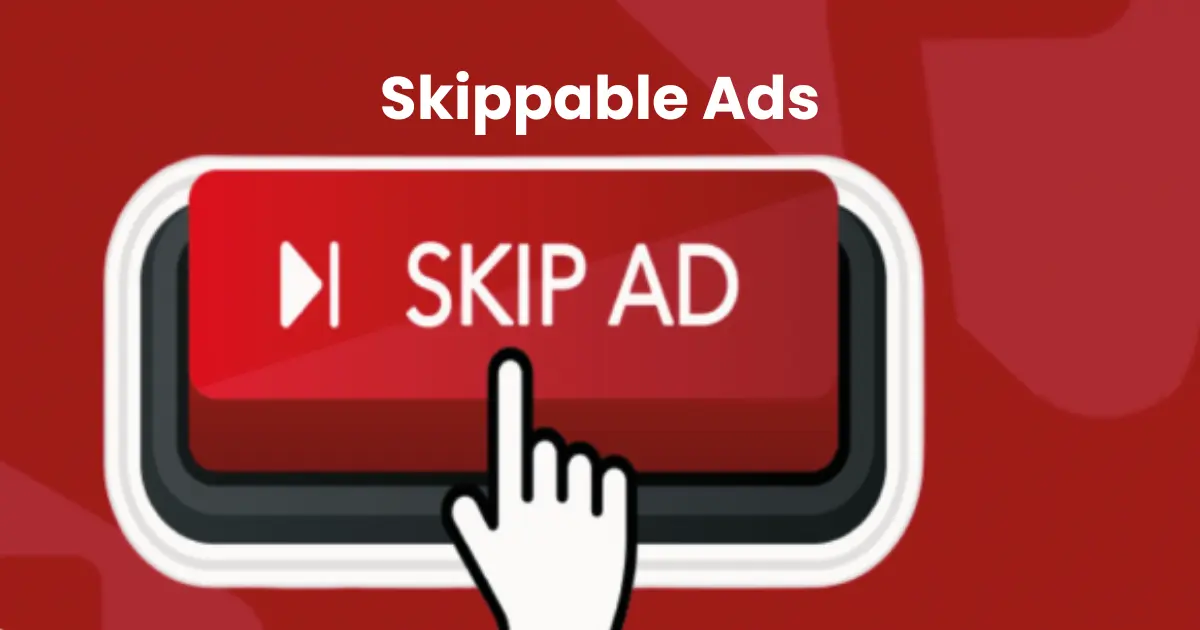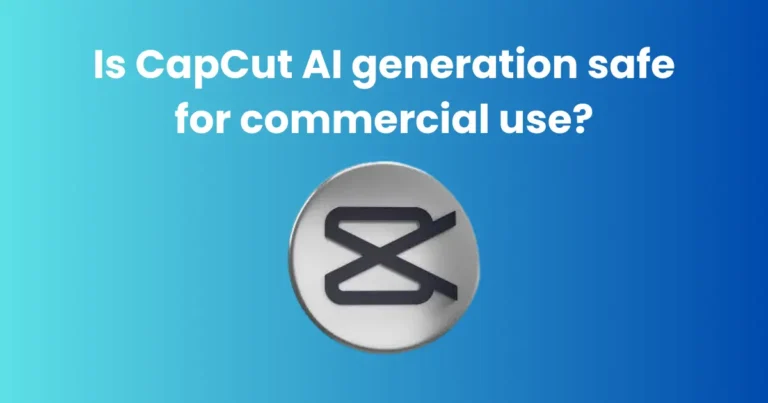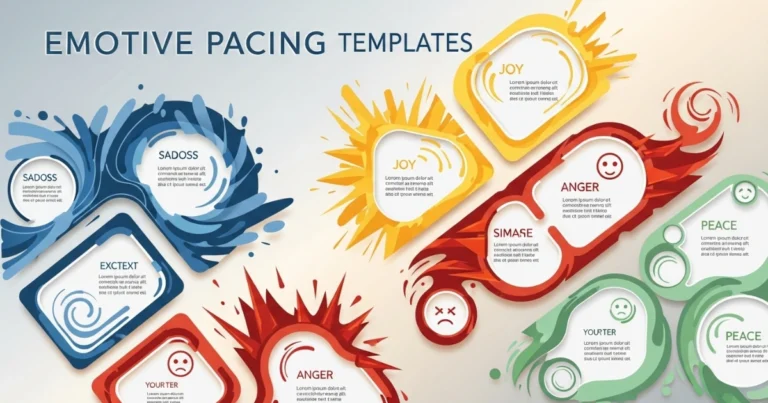Skippable Ads | How Skippable Ads Impact User Behavior

Contents
Skippable ads have become an integral part of the digital advertising ecosystem, allowing viewers to skip content after a few seconds if they choose to. These types of ads are particularly popular on video-sharing platforms such as YouTube and social media networks, offering users the flexibility to control their viewing experience. Unlike traditional ads, which force viewers to watch the entire content, skippable ads empower the audience, improving user satisfaction and engagement. In this article, we will delve into the mechanics of skippable ads, their advantages and challenges, and how they are reshaping the future of online advertising. From enhancing brand recall to boosting cost-efficiency for advertisers, skippable ads have revolutionized how businesses approach digital marketing.
How Skippable Ads Work
These ads are designed to offer viewers the ability to skip the content after a short period, typically between 5 to 6 seconds. This flexibility is one of the primary features that distinguishes skippable ads from non-skippable ones. Here’s a breakdown of how skippable ads function:
- Ad Formats and Timing: Skippable ads are usually implemented on platforms like YouTube, where viewers are shown a short video ad before or during the content they want to watch. After the initial few seconds, viewers are given the option to skip the ad if they prefer. However, advertisers can still capture valuable impressions and engage users within those first few seconds, which is critical for brand visibility.
- Viewer Control: One of the main aspects of skippable ads is the viewer’s control over the content. If the viewer finds the ad interesting or relevant, they may choose to watch the entire ad. On the other hand, if the viewer is not interested, they can skip the ad and move on to the content they want to watch.
- Cost Model: For advertisers, skippable ads are typically billed based on engagement. This means advertisers are often charged when a user either watches a certain amount of the ad (for example, 30 seconds) or interacts with the ad, such as clicking on a link or a call-to-action. The cost-per-view (CPV) model is commonly used, ensuring that businesses pay for ads that actually capture attention rather than those that are simply viewed in full.
- Effectiveness and Impact: The key to effective skippable ads lies in the ability to capture the viewer’s attention within the first few seconds. Since viewers have the option to skip, those first few moments are crucial in persuading the viewer to continue watching.
Overall, skippable ads combine flexibility for viewers with strategic opportunities for advertisers. By understanding how these ads work, both businesses and viewers can maximize the benefits of this popular advertising format.
Advantages of Skippable Ads
These ads offer numerous benefits, both for advertisers and viewers. Their unique structure provides flexibility and fosters a better user experience while also delivering effective advertising results. Let’s explore the key advantages:

1. Enhanced User Experience
One of the most significant benefits of skippable ads is the improved user experience. Viewers appreciate having the option to skip the ad if they’re not interested, giving them more control over their viewing time. This autonomy leads to greater satisfaction, as users can avoid disruptive or irrelevant content. Since skippable ads prevent users from feeling bombarded with unwanted material, they help in maintaining a positive attitude toward the platform and the brands advertised.
2. Greater Engagement
These ads typically lead to higher engagement rates compared to non-skippable ads. When users are given the option to skip, they are more likely to watch the ad if it is relevant or interesting. This leads to better engagement as viewers are more focused and inclined to interact with the content they chose to watch. The ability to skip ensures that the audience who remains engaged is genuinely interested in the message being delivered, making these viewers more likely to convert into customers or take action.
3. Cost-Efficiency for Advertisers
For advertisers, skippable ads offer an efficient cost model. Unlike traditional advertising formats where you pay for the ad to be shown regardless of engagement, skippable ads are often billed on a cost-per-view (CPV) basis. This means that advertisers only pay when the viewer interacts with the ad, either by watching a certain duration of the video or engaging with a call-to-action. This model helps advertisers maximize their marketing budget, as they are paying for actual engagement rather than simply impressions that may not lead to any meaningful interaction.
4. Increased Brand Recall
Skippable ads that manage to capture a viewer’s attention within the first few seconds can lead to increased brand recall. Since users have the power to skip, the initial moments of the ad become crucial for brand messaging. If an ad is engaging and relevant, viewers are more likely to watch it fully, which strengthens the brand’s message and increases the chances of remembering the brand. Advertisers who focus on delivering their value proposition quickly and creatively are more likely to make a lasting impression on viewers.
5. Flexibility for Advertisers
Skippable ads give advertisers the freedom to experiment with various formats and content types. Because advertisers know they are only paying for actual engagement, they are more inclined to test different messaging, visuals, and approaches without the risk of paying for uninterested views. This freedom promotes creativity and the ability to optimize ad performance based on viewer preferences and behaviors.
Skippable ads present a win-win situation for both advertisers and viewers. Advertisers benefit from greater engagement, cost efficiency, and more control over ad performance, while viewers enjoy the freedom to choose content that is relevant to them. This unique dynamic is what makes skippable ads one of the most popular and effective advertising formats in the digital landscape.
Challenges of Skippable Ads
While skippable ads offer numerous advantages, they also come with their own set of challenges. Advertisers and platforms must be aware of these obstacles in order to maximize the effectiveness of their campaigns. Here are some of the key challenges associated with skippable ads:

1. Short Attention Span
One of the biggest challenges with skippable ads is the very short amount of time available to capture the viewer’s attention. Since users can skip the ad after a few seconds, advertisers must ensure their message is clear, concise, and engaging right from the start. This means that creating impactful content within the first few seconds is essential. If an ad fails to hook the viewer quickly, they are likely to skip it, resulting in lost opportunities for brand exposure and engagement.
2. Risk of Skipping
Despite the advantages of allowing users to skip ads, this feature also comes with a significant risk. Many viewers may opt to skip the ad without fully watching it, particularly if they are not immediately interested in the content or if the ad fails to resonate with them. This could lead to lower engagement rates and wasted advertising spend if the ad is not captivating enough. Even though advertisers are typically charged based on views or interactions, the decision to skip can still impact the ad’s effectiveness and overall return on investment (ROI).
3. High Creative Demands
Since skippable ads rely on capturing attention quickly, there is a high demand for creative, high-quality content. Advertisers need to craft ads that stand out in a crowded digital landscape. This requires a strong creative concept, engaging visuals, and an effective call-to-action. Developing such content often demands significant time, resources, and expertise, which can be a challenge for smaller businesses with limited budgets or creative capabilities. Ensuring that the ad is both compelling and short enough to hold the viewer’s attention is crucial for success.
4. Platform and Audience Variability
The effectiveness of skippable ads can vary across different platforms and audiences. For example, an ad that performs well on YouTube might not have the same impact on a social media platform like Facebook. Different platforms have distinct user behaviors, content consumption patterns, and audience demographics, which means that advertisers need to tailor their skippable ads to each specific environment. This requires additional research, customization, and testing to ensure the ad resonates with viewers and achieves its intended goals.
5. Ad Fatigue Among Users
While skippable ads help reduce ad fatigue compared to non-skippable ones, viewers can still experience ad fatigue if they are repeatedly shown the same skippable ads across different platforms or videos. Overexposure to the same ad may lead to negative feelings toward the brand, diminishing the effectiveness of future ads. To avoid ad fatigue, advertisers must frequently refresh their ad creatives, target new audience segments, and ensure variety in their ad campaigns.
6. Ad Blocking
Another challenge faced by advertisers is the increasing use of ad blockers. Many internet users opt for ad-blocking software to avoid intrusive or irrelevant ads, which can include skippable ads. While skippable ads are less intrusive than traditional formats, they still face resistance from users who prefer to avoid any form of advertising altogether. This trend can lead to reduced reach and lower ad visibility, potentially limiting the overall impact of skippable ads.
While skippable ads offer several advantages, they also present challenges that advertisers must address. From the risk of early skipping to the need for high-quality, engaging content, skippable ads require careful planning, creativity, and strategy. By understanding these challenges and adapting their approach, advertisers can overcome potential obstacles and fully leverage the power of skippable ads to drive effective results.
How Skippable Ads Impact User Behavior
Skippable ads, by offering viewers the ability to skip after a few seconds, significantly influence how users interact with digital content and advertisements. These ads change the dynamics between advertisers and audiences, making user behavior a central factor in determining the success of an ad campaign. Let’s explore how skippable ads impact user behavior and what it means for both viewers and advertisers:

1. Increased User Control and Satisfaction
One of the most notable impacts of skippable ads on user behavior is the increased sense of control viewers feel. Users are more likely to appreciate the ability to skip ads, particularly if they are irrelevant or lengthy. This control over the ad experience leads to higher user satisfaction as viewers are not forced to watch content that does not interest them. As a result, users may feel more positive toward platforms that offer skippable ads, as they respect the viewer’s preferences and time.
However, this control also comes with a responsibility for advertisers to create compelling content that encourages users to engage with the ad. If users feel they are in control, they will expect ads to add value and not disrupt their experience unnecessarily. This dynamic creates a more user-centric advertising model where brands need to meet the expectations of their audience to maintain their interest.
2. Higher Engagement for Relevant Ads
These ads have a unique effect on user engagement. When viewers are given the option to skip, they are more likely to continue watching an ad if it is relevant or engaging. Users tend to engage more with skippable ads that align with their interests, needs, or preferences. As such, skippable ads have a filtering effect, meaning only viewers who find the content appealing will continue watching.
This increases the quality of engagement, as advertisers are only paying for users who choose to engage with their ads. On the flip side, if an ad fails to capture attention quickly, viewers are more likely to skip it, reducing the chances of engagement. Therefore, advertisers must craft ads that quickly resonate with their target audience to ensure a higher likelihood of engagement.
3. Behavioral Influence on Brand Perception
These ads have the potential to shape users’ perceptions of brands based on how they are presented. If an ad is creative, relevant, and easily understood within the first few seconds, it is more likely to leave a positive impression, even if the viewer skips it after that. However, if an ad is perceived as irrelevant or annoying, viewers may develop negative feelings toward the brand and its products, especially if they are forced to watch ads that they cannot skip.
This behavioral shift has made it crucial for brands to focus on delivering value early on in their skippable ads. Ads that are too long, irrelevant, or overly promotional are more likely to be skipped, which can adversely affect the brand’s reputation. Therefore, companies need to be mindful of their ad strategies and focus on creating ads that are concise, clear, and compelling to improve overall brand perception.
4. Shift in Viewer Expectations
With the rise of skippable ads, viewers have become accustomed to skipping content that doesn’t interest them. This has created a shift in expectations toward advertisements in general. Users now expect brands to respect their time and provide content that is quick, engaging, and directly relevant to their interests. This shift in user expectations has prompted advertisers to focus more on personalization, targeting the right audience with ads that fit their specific needs or interests.
For instance, skippable ads often come with sophisticated targeting options that allow advertisers to tailor their content based on the user’s past behavior, preferences, and demographics. As a result, users are more likely to engage with ads that appear tailored to them, leading to more effective ad campaigns and a better user experience.
5. Impact on Viewing Habits
Skippable ads also affect overall viewing habits. Since users are not forced to sit through long, non-skippable ads, they may become more tolerant of ads in general, knowing they have the power to skip them. This flexibility allows users to watch more content with the understanding that they can skip irrelevant ads and focus on what interests them.
In a broader context, this impacts the viewing time on digital platforms. Platforms that feature skippable ads may encourage users to spend more time on the site, knowing that they are in control of their ad experience. This behavior has a direct impact on content consumption patterns, as users may be more inclined to watch longer videos or explore more content when they feel that ads won’t be an intrusive barrier to their experience.
These ads have a profound impact on user behavior by offering greater control, influencing engagement, and shifting viewer expectations. Advertisers must adapt their strategies to create more relevant, engaging, and personalized ads to keep users from skipping. Understanding how skippable ads affect user behavior is key to maximizing their effectiveness and ensuring a positive experience for viewers while achieving business goals.
Best Practices for Creating Effective Skippable Ads
These ads present a unique challenge for advertisers, as they require capturing the viewer’s attention quickly and delivering a message that resonates within a very short window of time. To make the most out of skippable ads, advertisers must follow best practices to ensure their content is engaging, memorable, and compelling enough to keep viewers from skipping. Here are the top best practices for creating effective skippable ads:

1. Hook Viewers Early
Since viewers can skip a skippable ad after a few seconds, the first few moments are crucial. You need to capture their attention instantly. Start with a strong hook—a question, intriguing visual, or a bold statement—that immediately addresses a viewer’s pain point or piques their curiosity. The goal is to make the audience want to keep watching, even if they have the option to skip. The first 5 seconds should provide a compelling reason to stay engaged with the ad.
For instance, if you’re advertising a fitness product, starting with a quick demonstration of the results or a relatable fitness challenge can grab attention right away. The key is to quickly signal the value of watching the entire ad.
2. Keep It Short and Sweet
Even though skippable ads can last anywhere from 15 to 30 seconds, it’s important to keep the content as brief as possible while still delivering the message. Concise messaging is vital to avoid losing the viewer’s attention. Focus on one key idea or offer and make it easy for viewers to understand in a short span of time.
The ad should never feel like it’s dragging on. Clear, direct, and punchy content tends to work better, as viewers are more likely to skip if the ad feels too long or unnecessary. Get straight to the point, and don’t overcomplicate the message.
3. Use Strong Visuals and Sound
In a world where users are accustomed to skipping ads, visuals and sound can be powerful tools to hold attention. Bright, eye-catching visuals, combined with engaging music or sound effects, can enhance the emotional impact of an ad. Whether you’re using humor, drama, or awe, compelling visuals and sound help deliver your message in a more dynamic way.
For example, dynamic animations, compelling product shots, or quick action scenes can keep viewers interested. Additionally, clear and crisp audio with a strong voiceover can further ensure that the message resonates and that the viewer feels engaged.
4. Focus on the Value Proposition Early
Viewers are more likely to stay with an ad if they can quickly understand what’s in it for them. Early in the ad, clearly state the value proposition or the problem your product or service solves. Avoid fluff and get to the benefit quickly—this is critical in a skippable ad.
For instance, if you’re selling a time-saving app, tell the viewer how it can save them minutes each day right at the start. This clarity about the benefits encourages viewers to stick around to learn more about how the solution works.
5. Create a Strong Call-to-Action (CTA)
A skippable ad should always include a clear and persuasive call-to-action (CTA). After engaging the viewer with a captivating start, you must tell them what to do next. Whether it’s visiting a website, downloading an app, or subscribing to a service, a strong CTA directs the viewer on the next steps and reinforces the ad’s purpose.
Ensure that the CTA is easy to understand and appears in a logical place within the ad, ideally toward the end or after the main message is delivered. The more straightforward and actionable your CTA, the more likely viewers will be to act on it, even if they skip the ad after a few seconds.
Place your logo or brand name at both the beginning and end of the ad to reinforce brand recall. Even if viewers skip before the end, they will still remember who the ad was for, making the overall experience more effective in the long term.
Skippable Ads vs Non-Skippable Ads: A Comparison
When it comes to digital advertising, two primary types of ads dominate the landscape: skippable ads and non-skippable ads. Both have their unique advantages and challenges, and choosing between them can significantly impact the effectiveness of an ad campaign. This article provides a comprehensive comparison of skippable ads and non-skippable ads, highlighting the pros and cons of each and helping advertisers decide which format is right for their goals.

1. Definition and Key Differences
Skippable Ads: These ads allow viewers to skip after a few seconds, typically around 5 seconds, with the option to continue watching or skip at any point during the ad. This format is commonly used on platforms like YouTube and social media channels, where user control over ad viewing is prioritized.
Non-Skippable Ads: In contrast, non-skippable ads require viewers to watch the entire ad before they can access the content they want. These ads can range from 15 to 30 seconds or longer, and users cannot bypass them. Platforms like YouTube and streaming services like Hulu often feature these types of ads.
2. User Experience and Engagement
Skippable Ads:
- Advantages: The ability to skip ads after a few seconds offers a better user experience for many viewers. Audiences appreciate the autonomy to decide which ads to engage with, especially if they find the content irrelevant or uninteresting. This leads to a more positive attitude toward the platform and reduces potential frustration with excessive ad interruptions.
- Disadvantages: Because viewers can skip the ad, there is a risk that the message may not be fully received by all viewers. Advertisers must capture attention quickly to ensure that the ad delivers value within the first few seconds.
Non-Skippable Ads:
- Advantages: Non-skippable ads guarantee that the viewer will see the entire message, which can lead to higher ad recall. Since viewers are required to watch the ad, this format ensures that the message is fully conveyed, which can be especially important for complex or storytelling-driven ads.
- Disadvantages: The forced nature of non-skippable ads can lead to viewer frustration, especially if the ad is too long or irrelevant. This often results in a negative viewing experience and can cause users to develop ad fatigue, potentially reducing their overall engagement with the platform.
3. Viewer Retention and Skip Rates
Skippable Ads:
- Retention: Viewer retention in skippable ads is typically lower because users have the option to skip the ad. However, if the ad is compelling, informative, or engaging, viewers are more likely to stay for the duration.
- Skip Rates: The skip rates for skippable ads are higher compared to non-skippable ads. Users tend to skip ads that are irrelevant to them, poorly timed, or not visually interesting. This presents a challenge for advertisers, who must create ads that quickly capture the audience’s attention.
Non-Skippable Ads:
- Retention: Non-skippable ads tend to have higher viewer retention since users cannot skip them. The full message is delivered, ensuring that viewers absorb the information without distractions.
- Skip Rates: Skip rates are non-existent for non-skippable ads, which guarantees that the viewer watches the entire ad. This provides advertisers with more control over the duration of their messaging.
4. Impact on Brand Recall and Awareness
Skippable Ads:
- Brand Recall: Skippable ads can lead to higher brand recall if the content is engaging and effectively captures attention within the first few seconds. However, if the ad is skipped before completion, there is a risk that viewers may not remember the brand or message.
- Awareness: While skippable ads allow for more flexibility, their effectiveness depends heavily on the ability to engage viewers quickly. If a viewer skips the ad, they may not be exposed to the brand enough to foster awareness.
Non-Skippable Ads:
- Brand Recall: Non-skippable ads tend to result in higher brand recall because viewers are forced to watch the entire ad. This can be especially advantageous for building brand awareness and introducing new products or services.
- Awareness: Since the ad is shown in its entirety, viewers are more likely to remember the brand and the message. This is crucial for creating lasting impressions, particularly for campaigns focused on awareness or launching new products.
5. Cost and Effectiveness
Skippable Ads:
- Cost: Generally, skippable ads can be more cost-effective for advertisers, as they are typically priced on a cost-per-view (CPV) basis. Advertisers only pay when the ad is watched in its entirety or for a specified duration (e.g., 30 seconds). This means advertisers are only paying for engaged viewers who are interested enough to stay past the initial 5 seconds.
- Effectiveness: The effectiveness of skippable ads depends on how well they are targeted. If the ad is engaging and resonates with the right audience, it can drive higher conversions with lower costs. However, if the ad is skipped too often, it may not generate the desired results.
Non-Skippable Ads:
- Cost: Non-skippable ads tend to be more expensive due to the guaranteed full ad view, often priced on a cost-per-impression (CPM) or cost-per-thousand impressions (CPM) basis. Since viewers are required to watch the entire ad, advertisers pay for the complete exposure.
- Effectiveness: While more expensive, non-skippable ads can be more effective in delivering a strong, undistracted message. However, if the ad isn’t compelling or is seen as intrusive, it could lead to negative feelings toward the brand, making it less effective in the long term.
6. Best Use Cases
Skippable Ads:
- Best for short, targeted campaigns where engagement and flexibility are key. They work well when trying to reach a broader audience, especially on platforms where users expect to skip ads (e.g., YouTube).
- Ideal for products or services that require quick, attention-grabbing ads that provide value in the first few seconds.
- Effective for retargeting or remarketing campaigns, where users are already familiar with the brand.
Non-Skippable Ads:
- Best for brand-building campaigns or messages that require full attention, such as product launches, public service announcements, or storytelling-driven content.
- Ideal for advertisers who want to ensure the full message is delivered without interruption.
- Works well for campaigns targeting a smaller, highly engaged audience where complete viewer retention is essential.
The Future of Skippable Ads
As digital advertising continues to evolve, the future of skippable ads looks promising but challenging. With changes in user behavior, technological advancements, and shifting expectations from advertisers, skippable ads are poised to adapt in new and innovative ways.

1. More Personalized Skippable Ads
In the coming years, we can expect skippable ads to become even more personalized. Advances in data analytics and artificial intelligence (AI) will allow advertisers to gather deeper insights into users’ preferences, behaviors, and demographics. As a result, skippable ads will be tailored to individual viewers, ensuring that the content they see is highly relevant to their interests.
- Targeting: Advertisers will be able to target audiences more effectively, delivering ads based on location, interests, online behaviors, and even real-time engagement.
- Engagement: By delivering more personalized content, users may be less likely to skip ads, as they will find the content more interesting and useful.
2. Shorter, More Impactful Ads
As user attention spans continue to shorten, the future of skippable ads will likely focus on brevity and impact. Advertisers will need to deliver their message quickly within the first few seconds to capture attention before viewers have the chance to skip.
- Content: Expect to see more concise, compelling ad formats that make an impact in the first few seconds. Creators will use visual storytelling and succinct messaging to ensure that even if the viewer skips, they still retain the core message.
- Timing: Ads will continue to get shorter, with more emphasis on creating content that grabs attention immediately and offers immediate value.
3. Interactive and Engaging Skippable Ads
Interactive elements will play a larger role in the future of skippable ads. By adding interactive features, such as polls, quizzes, and clickable links, advertisers can turn skippable ads into engaging experiences. Viewers may feel more compelled to interact with the ad instead of skipping it.
- User Choice: Ads may offer choices to users, such as selecting different products or services to learn more about, making the experience more dynamic and engaging.
- Gamification: Gamified elements, like challenges or rewards, may be incorporated into skippable ads to encourage users to engage with the content, further reducing the likelihood of skipping.
4. Greater Integration with Social Media Platforms
Skippable ads are likely to become even more integrated with social media platforms, which are constantly evolving to enhance user experience and engagement. As platforms like Facebook, Instagram, and TikTok increase their focus on video content, advertisers will look for ways to leverage the power of these ads within these environments.
- Native Advertising: Skippable ads will become more native to the platform’s content, blending seamlessly with user-generated content. This can help reduce ad fatigue and make the ads feel less intrusive.
- Storytelling through Social Media: Platforms are already investing in video-driven formats (like Stories), and skippable ads will adapt to these formats to maximize engagement. Expect to see more skippable ads in formats such as Stories, Reels, and Shorts that capitalize on visual appeal and narrative storytelling.
5. Increased Use of AI and Automation
Artificial intelligence and automation will continue to enhance the effectiveness of skippable ads. By analyzing vast amounts of data in real-time, AI can optimize ad targeting, content delivery, and even the timing of the ad for maximum engagement. As a result, advertisers will be able to craft more efficient and impactful campaigns with minimal manual intervention.
- Optimization: AI will play a key role in optimizing skippable ads for various platforms, ensuring the right content reaches the right audience at the right time.
- Automated Creative Testing: Advertisers will use AI to test different ad creatives and formats quickly to determine which ones perform best, refining campaigns on the fly.
6. Enhanced Analytics and Measurement
The future of skippable ads will also bring more sophisticated analytics and measurement tools. Advertisers will gain access to real-time data that provides deeper insights into how users are interacting with their ads. With more granular analytics, brands can fine-tune their ad strategies to optimize performance.
- Ad Engagement Metrics: In addition to measuring view rates and skip rates, advertisers will gain insights into how long viewers engage with specific elements of the ad, such as calls-to-action (CTAs) or interactive features.
- Conversion Tracking: Skippable ads will be more closely tied to conversion tracking, allowing brands to measure the effectiveness of their ads in terms of sales, sign-ups, or other business outcomes.
Conclusion
Skippable ads have proven to be an invaluable tool in the digital advertising landscape, offering a balance between user experience and advertising effectiveness. As we’ve explored, these ads provide advertisers with a unique opportunity to engage audiences without being intrusive, while also giving users the control to skip content they’re not interested in. However, the key to success lies in crafting ads that capture attention within the first few seconds, making them relevant, interactive, and tailored to the user.
Looking ahead, the future of skippable ads is bright, with advancements in personalization, AI, and immersive technologies like AR and VR paving the way for even more engaging ad experiences. By staying adaptable to these evolving trends, advertisers can continue to refine their strategies and create compelling ads that not only meet the needs of the business but also enhance the user experience.
In this ever-changing digital world, these ads are here to stay, and their evolution will only continue to shape the way brands communicate with their audiences. For businesses, embracing the potential of skippable ads and following best practices can drive more impactful results and foster deeper connections with consumers.






